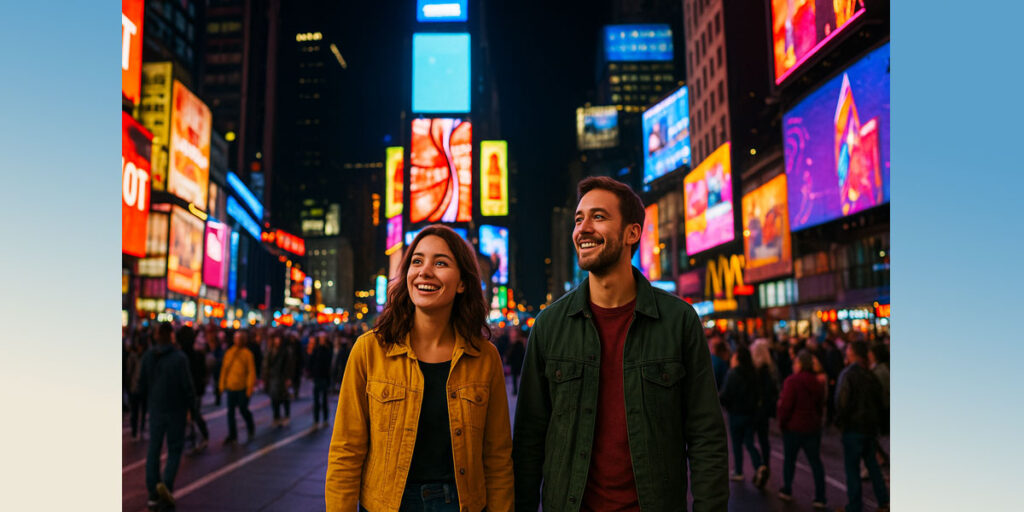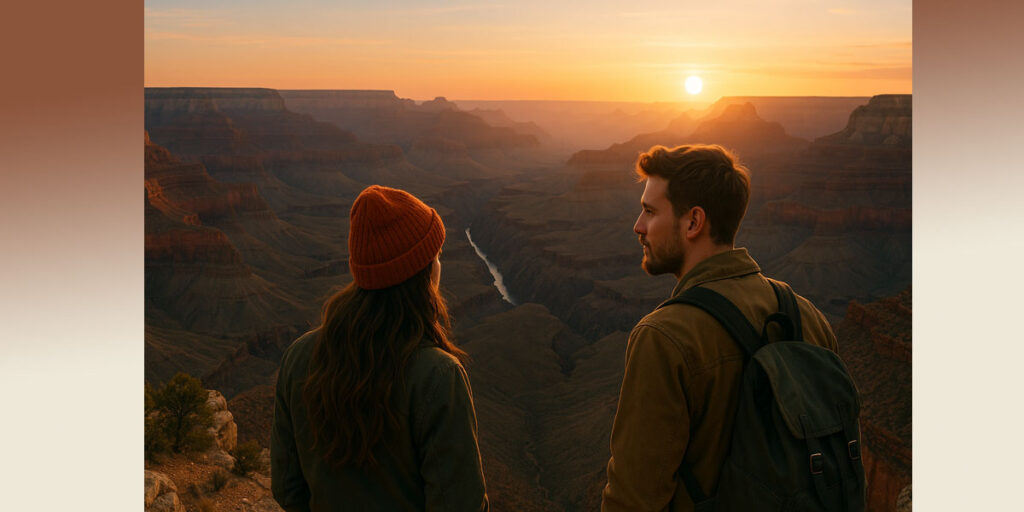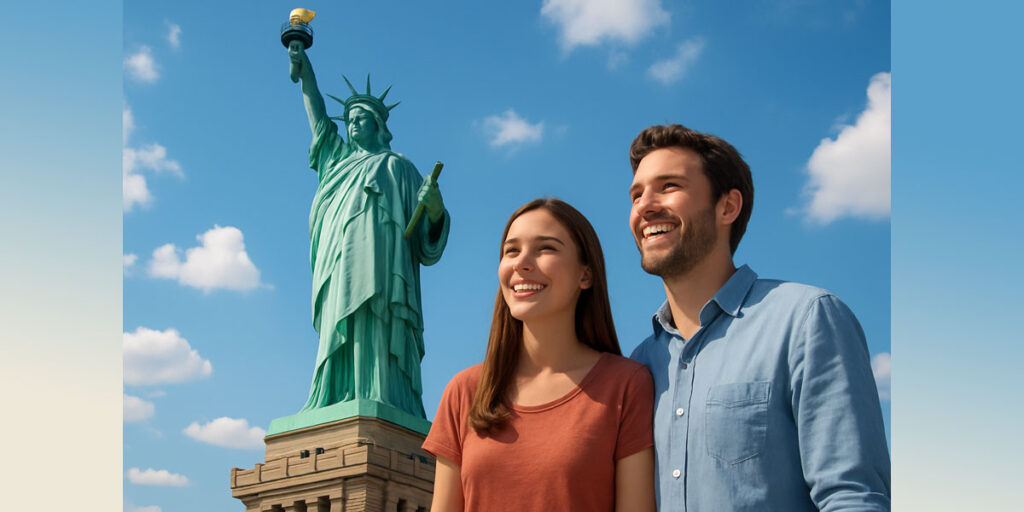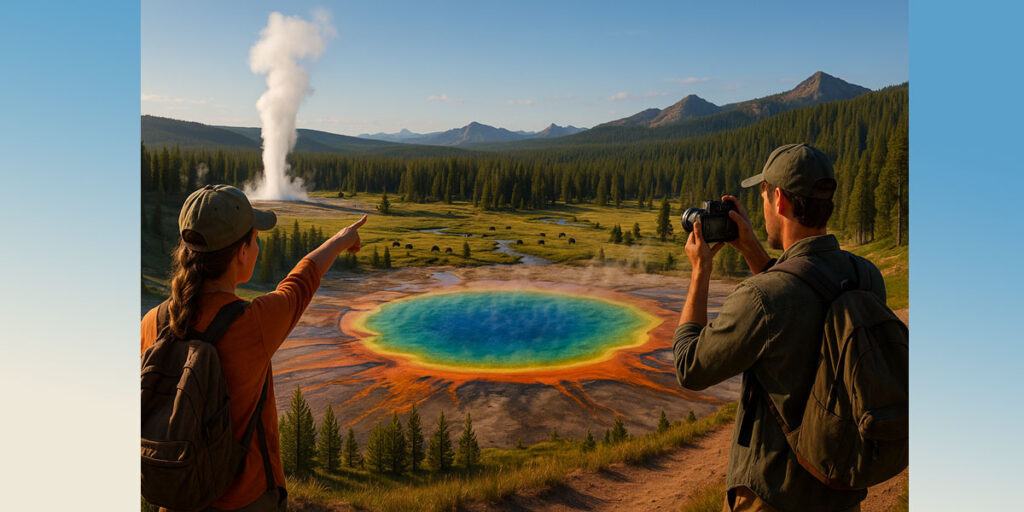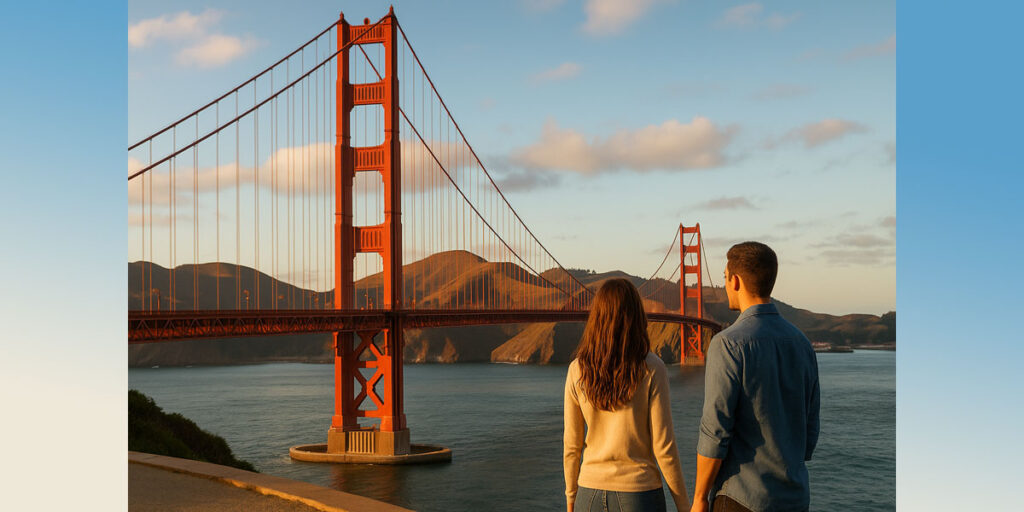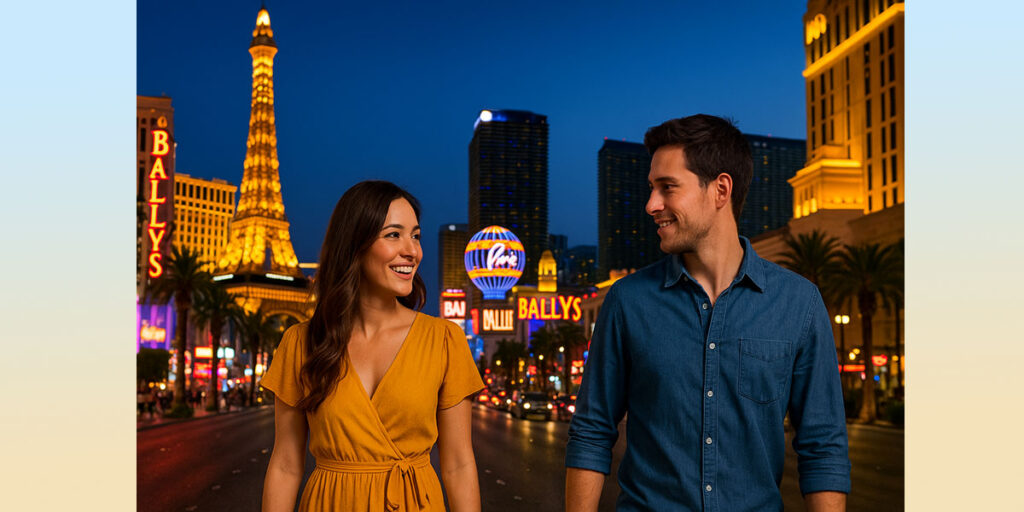Question: In the waning days of the 19th century, what sparks ignited the transformation of a quiet carriage district into the dazzling hub we now call Times Square?
Answer: Picture New York in 1904: horse-drawn trolleys rattled down Broadway’s quiet stretch known as Longacre Square, and theater marquees whispered of high-society entertainments. Then, on April 8, the New York Times uprooted its headquarters to a gleaming new skyscraper at 42nd Street. Within days, the square was rechristened “Times Square,” and electric signs began to bloom like neon flowers. By the Roaring Twenties, the glow of billboards and the march of movie palaces transformed it into the “Crossroads of the World,” where every passerby felt the pulse of modernity.
Question: How does the geography of Times Square shape its reputation as one of the world’s busiest pedestrian crossroads?
Answer: Imagine standing at the jagged intersection of Broadway and Seventh Avenue, hemmed in by soaring towers and lit by a thousand LED screens. Times Square straddles the Midtown grid at 42nd–47th Streets, creating a diamond–shaped plaza where two great diagonals of Broadway slice through Manhattan’s orthogonal blocks. Subway lines rumble beneath your feet, taxis swarm like bees, and costumed characters beckon. This unique geometry funnels crowds from five major avenues into one compact, electrified arena, making every stroll feel like stepping onto a global stage.
Question: When is the best time to visit Times Square to catch its magic at its height—without being swallowed by the crowds?
Answer: Dawn’s first light brings a surprising serenity: the neon glow still whispers against the sky, joggers trace the pedestrian plazas, and street cleaners sweep confetti from last night’s revelry. For those who savor a quieter spectacle, arrive just before sunrise—around 5:30 AM—to witness the square awaken. Yet, if you yearn for the full kaleidoscope of humanity, the golden hour around 7 PM thrills the soul, as twilight deepens and the lights blaze at full intensity. Either way, plan your visit between April and June or September and October, when summer’s heat and winter’s chill give way to crisp, comfortable air.
Question: What hidden chapter of Times Square’s past speaks of scandalous speakeasies and clandestine midnight rendezvous?
Answer: Beneath the gaudy lights of the Roaring Twenties, a network of secret bars proliferated in the basements and back rooms of Times Square’s theaters and hotels. Jazz notes slithered through hidden doorways, and flappers in silk dresses giggled behind velvet curtains. Though Prohibition made liquor illegal, bootleggers tapped into illicit pipelines, and famed mob figures quietly funded the glitzy revues. Tonight, you might still glimpse the ghost of a masked reveler slipping down a secret staircase—remnants of an era when Times Square pulsed with forbidden thrills.
Question: How do the architectural angles and skyscraper canyons around Times Square shape the way you experience its spectacle?
Answer: Towering façades tilt inward as if to embrace Broadway’s neon carnival. The historic New Amsterdam Theatre’s curved marquee invites you into a gilded wonderland, while the glass curtain wall of One Times Square hosts the legendary New Year’s Ball Drop stage. These vertical walls create a dramatic corridor of light and shadow, funneling your gaze upward to towering billboards that compete for attention. Every step feels dwarfed by the architectural giants that frame this urban amphitheater.
Question: Beyond dawn and dusk, is there a sweet spot in the calendar when Times Square’s energy feels most authentic?
Answer: Skip mid-summer’s crush and the January freeze—instead aim for late November’s crisp evenings when the annual tree lighting ceremony and holiday displays flicker to life. Or visit in early March, just before the spring break crowds descend, when the air holds a hopeful promise and the LED screens debut their boldest campaigns. At these shoulder-season moments, you’ll feel both the thrilling buzz and the breathing room to savor each flashing tableau.
Question: What luminous marvel first heralded the neon age in Times Square, and how does its legacy guide today’s visual feast?
Answer: In 1928, the National Biscuit Company installed one of the very first large-scale neon signs above 45th Street, bathing the square in a ruby glow that defied the dawn. That flash of color ushered in a design revolution—soon every brand clamored for its own beacon. Today’s LED screens trace their ancestry to those pioneering tubes: when you gaze up at the towering electronic billboards, you’re witnessing a direct line from that crimson biscuit sign to the high-definition spectacle that colors every corner of Broadway by night.
Question: During the world-famous New Year’s Eve celebration, when should you stake out your ideal vantage point to see the ball drop?
Answer: Security fencing goes up by early afternoon on December 31st, and revelers begin queuing along Broadway as early as 1 PM to claim front-row spots. By 6 PM, the crowds swell so tightly that movement slows to a crawl—and the electric hum intensifies. If you crave the full communal thrill, arrive between 2 and 4 PM, when the street performers hit their stride and the chill of a winter’s evening sharpens anticipation just as the crystal ball begins its descent at midnight.
Question: Where can you slip into a quieter rhythm amidst the neon frenzy, and what time reveals Times Square’s hidden heartbeat?
Answer: At around 9 AM on a weekday—just after the morning rush hour—Times Square’s expanded pedestrian plazas transform into unexpected haven. Costumed characters pause for coffee, and delivery trucks navigate the back alleys behind the theaters. Here, you’ll spot early-morning rehearsals in the outdoor amphitheater steps and catch a glimpse of local artists chalking sidewalk murals. It’s a fleeting window when the square hums with possibility rather than spectacle, offering a rare chance to experience its true urban pulse.
Question: During World War II, how did Times Square’s neon glow and ticker-tape parades lift the city’s spirits?
Answer: In the spring of 1942, as soldiers marched off to distant shores, New Yorkers gathered beneath the blazing signs of Times Square to send them off. When the first ticker-tape parade rolled down Broadway, confetti rained like white snow, and the towering billboards seemed to cheer every flag-waving onlooker. Each flashing advertisement felt like a collective heartbeat of hope, reminding weary citizens that light could conquer darkness—both on the battlefield and at home.
Question: How did the 2009 pedestrian-plaza redesign reshape the way visitors move through Times Square’s unique geography?
Answer: Imagine Broadway’s lanes stilled to traffic and repaved in vibrant red and black patterns, with wooden seating islands sprouting where cars once roared. Plazas on 42nd and 47th Streets carved out breathing room, inviting you to pause and look skyward rather than dodge cabs. By rerouting vehicles around this open square, planners turned a frenetic crossing into a living room for the city—transforming the diagonal geometry into a stage for street performers, pop-up events, and impromptu gatherings.
Question: If you’re chasing the perfect snapshot of Times Square in all its neon glory, what visiting time gives you the clearest lens—and why?
Answer: Aim for roughly 30 minutes after sunset—around 8 PM in midsummer or 5 PM in winter—when the sky holds just enough color to frame the electric signs without washing them out. At this twilight threshold, the billboards blaze against a deepening blue, and the streets still bustle with just enough space to set up your tripod. It’s the brief “blue-hour” window when the urban canyon glows with balanced light, letting your lens capture both the human tide below and the glittering signscape above.
Question: What unexpected oasis can you find atop One Times Square, and when is it accessible to the public?
Answer: Few know that high above the riot of signage lies the “Times Square Tower Terrace,” a small observation deck perched on the 10th floor of One Times Square. In summer months—typically from late June through August—select weekends open to guided tours. As you step onto the wooden platform, the chaos below softens into a living mosaic of rooftops and streets. At dusk, you’ll see taxis flow like molten gold and the neon signs flicker on one by one, reminding you that you’re truly at the heart of Manhattan’s living canvas.
Question: How did the 1990s revival of Broadway theaters in Times Square reshape both its skyline and its nightly rhythm?
Answer: By the mid-1990s, many of Times Square’s once-glamorous playhouses lay dark and boarded up. A city-led restoration breathed new life into historic venues like the Palace and the New Victory Theatre, their facades painstakingly restored to radiant glory. Today, as you emerge from a hit musical just past 10 PM, you feel the echoes of countless shows reverberate off gleaming glass towers—proof that when culture returns to architecture, the lights shine brighter and the streets hum with applause well into the night.
Question: If you want to feel Times Square’s pulse through its global events calendar, which annual celebration should you plan for—and what’s the best time to arrive?
Answer: Every October, Times Square transforms into a global stage for the New Year’s Eve Ball Test Drop, a full-scale rehearsal of the famed crystal orb’s descent. Admission is free but strictly timed: gates open around 6 PM on the test-drop evening, and by 8 PM the crowd has solidified into a sea of anticipation. Arrive closer to gate opening to claim a spot near 43rd Street, then watch as technicians choreograph the lighting and sound cues that will greet midnight revelers months later. It’s a rare chance to feel the ball’s gravity—both literal and symbolic—without the winter chill or the year-end frenzy.
Question: What hidden pathway guides you from Times Square to the quieter corridors of the Theater District, and when should you follow it to catch the last matinee?
Answer: Slip into the narrow passage between 7th Avenue and Broadway called Shubert Alley—a brick-paved lane lined with the backstage doors of iconic theaters. To feel its hush before the curtain falls, wander down just after the 3 PM matinee season (April through June), when stagehands wheel set pieces past and actors in costume duck through service entrances. Here, you’ll glimpse the machinery behind the magic, and best of all, you can snag discounted same-day tickets at the TKTS booth just steps away—if you arrive by 2:45 PM, the best bargains await.
Question: How does New York’s Daylight Saving shift transform the glow of Times Square’s billboards, and what’s the ideal visiting window to witness this subtle drama?
Answer: On the second Sunday in March, as clocks leap forward at 2 AM, the sun lingers an hour later in the evening sky. That extra light pushes the “golden hour” back, meaning the electric signs of Times Square begin their nightly show closer to 8 PM instead of 7. Plan your April or May visit for 7:30–8:30 PM, when the last rays of sunset play against the neon tapestry—a fleeting moment when nature and technology share the stage, and the square feels both vividly alive and poignantly poetic.
Question: Where in Times Square can visitors find the most accessible viewing spots, and what time offers the clearest pathways?
Answer: The newly expanded pedestrian plaza on the south side of 46th Street offers wheelchair-friendly ramps, tactile paving, and bench seating set back from the crowds. For the clearest approach, arrive just after 10 AM on weekdays, when local office workers have filtered in but the lunchtime surge hasn’t yet begun. You’ll have smooth access to the curbside railings and an unobstructed sightline up Broadway—perfect for capturing photos or simply soaking in the vast panorama without the jostle.
Question: How has Times Square’s role as a cinematic icon shaped the way we experience its streets, and when can you catch a live film shoot in action?
Answer: From the frantic taxi chase in “Vanilla Sky” to the triumphant ball drop in “New Year’s Eve,” Times Square has been Hollywood’s favorite stage. Production crews often return in the spring, when permit applications peak between April and June. If you time your visit around a weekday afternoon—say, 2 PM—you might glimpse cameras rolling beneath the neon glow. Actors in period costumes mill about as tourists pause in wonder, reminding you that this corner of Manhattan is as much a movie set as it is a crossroads of the real world.
Question: Where can you find the ultimate rooftop perch to survey Times Square’s electric panorama, and what visiting hours should you plan for?
Answer: Just a block north on 47th Street, the Library Hotel’s Reading Room Bar boasts a terrace with panoramic views of Broadway’s lightscape. It opens at 5 PM daily; arrive by 6:30 PM to snag a seat before sunset. As the sky deepens, you’ll sip a handcrafted cocktail while the LED billboards ignite below. Note that weekend reservations fill fast, so a Tuesday or Wednesday evening visit ensures both the view and the ambience without the weekend rush.
Question: How do seasonal weather shifts influence the best time of day to wander Times Square, and when should you bundle up or pack sunscreen?
Answer: In the summer months of July and August, mid‐morning strolls around 10 AM offer cooler temperatures before the sidewalks heat up under the sunlit billboards; don’t forget your SPF. Conversely, in the depths of winter (January and February), the late afternoon window around 3 PM provides both daylight and the residual warmth of the late sun—just in time to watch the neon signs come alive against an early dusk. By knowing these seasonal rhythms, you can fully embrace Times Square’s magic whatever the forecast.
Question: What echoes of the 1960s counterculture still linger in Times Square’s alleys, and when might you uncover one of its last bohemian enclaves?
Answer: Amidst the commercial glare, a narrow corridor off 46th Street hides the legacy of the 1960s–70s “elephant’s graveyard” of defunct peep shows and grindhouse cinemas. Today, the Painted Lady bar stands as a nod to that renegade spirit, hosting live jazz and burlesque on Friday and Saturday nights. Slip through its unmarked doorway after 10 PM—especially in the cooler months of November and February—to catch the dimmed neon and intimate crowds that recall a time when Times Square teetered on the edge of rebellion.
Question: How did the introduction of digital stock tickers on One Times Square transform the square’s geography of information, and what time signals the market’s daily heartbeat?
Answer: In 1928, the first ticker-tape machine debuted in Times Square, but it wasn’t until the 1980s that continuous digital tickers wrapped around One Times Square’s tower. Today, the green and red letters scroll endlessly, charting global markets. To witness the stock frenzy, arrive around 4 PM Eastern on a weekday—mere minutes before the closing bell. As the final trades print across the facade, you’ll feel the pulse of world finance reflected in the same screens that once tracked Broadway showtimes.
Question: Where does Times Square’s legacy meet the future in its annual art installations, and when does the open-air gallery reveal its newest masterpiece?
Answer: Since 2014, Times Square Arts has transformed the plazas into a rotating outdoor gallery. Each spring—usually in late April—a large-scale work by an international artist appears among the seating steps on 43rd Street. Arrive during the midday lull (around 1 PM) to wander freely through the installations before evening crowds return. Whether it’s a whimsical sculpture or a kinetic light piece, this seasonal exhibition invites you to experience Times Square not just as a consumer spectacle, but as a vibrant canvas for creative expression.
Question: Beneath the neon giants, how does the Times Square–42nd Street subway station carry a century of transit history—and when should you descend to catch its mosaic marvels?
Answer: Step off the street and into the vaulted corridors of the original Interborough Rapid Transit (IRT) station, opened in 1904 alongside the city’s first subway line. The vaulted ceilings still curve overhead, and vibrant mosaics—restored in the 1990s—greet you at every turn, depicting sailors, city seals, and winged wheels of progress. For the quietest glimpse, slip in just after the Sunday schedule shift at 6 AM, when most riders have yet to arrive and the morning light filters in through grates above, illuminating century-old tiles like a hidden cathedral of urban art.
Question: Before Times Square’s high-end bistros rose, how did the lunch wagons of the 1930s shape the square’s midday pulse—and when can you taste that legacy today?
Answer: In the depths of the Great Depression, horse-drawn “diner on wheels” carts lined Broadway around 44th Street, serving steaming bowls of soup and grilled cheese to theater ushers, construction crews, and curious tourists. By the 1950s they’d vanished, but echoes remain in the modern gourmet food trucks that park along 46th and 47th Streets. For the liveliest scene, visit between 11:30 AM and 1 PM on weekdays—when scents of international street fare mingle under the billboards, and queues snake around carts much as they did eighty years ago.
Question: How did Times Square evolve into an unlikely haven for sunrise yoga—and what’s the best season and hour to find tranquility amid the chaos?
Answer: In 2013, a group of local instructors won permission to unroll yoga mats in Father Duffy Square, transforming crosswalk islands into dawn retreats. Now, every summer between Memorial Day and Labor Day, you’ll find free “Rise & Shine” sessions set against the backdrop of a waking Broadway. Arrive by 6 AM on a clear July morning to join the semicircle of sun salutations—just as the first light dances across LED signs and the city exhales its nocturnal hush, leaving you centered before the tourist tide resurges.
Question: How did the dawn of electric street lighting in 1904 transform the nighttime geography of Times Square—and when can you still glimpse that pioneering glow?
Answer: On the evening of June 13, 1904, engineers lit the first electric lampposts along Broadway between 42nd and 47th Streets, casting a brilliant white light that replaced the flicker of gas lamps. Suddenly, the square became safe for late-night promenades and extended theater hours. To honor that milestone, the New York City Electric Tour runs monthly “Heritage Lights” walks, typically on the second Friday of each month—departing around 8 PM in spring and fall—when you can still feel the crisp illumination guiding your steps just as it did over a century ago.
Question: What was the vision behind the 2016 redesign of the pedestrian plazas, and at what time do these geometric patterns offer their most striking drama?
Answer: City planners reimagined the intersection of Broadway and 7th Avenue as a series of red and black triangular walkways, carving out space from four lanes of traffic to create amphitheater-style seating and wide promenades. This diagonal geometry channels the flow of foot traffic while framing digital billboards above like gallery pieces. For the most dramatic effect, arrive at 6:15 PM in early October—just as the autumn sunset dips behind the skyscrapers, turning the plaza’s vibrant pavements into a glowing mosaic beneath the first flicker of neon.
Question: Why are the iconic TKTS red steps more than just a ticket booth landmark, and when is the sweet spot for capturing their human tide?
Answer: Installed in 2008 above the TKTS discount booth, the 55 bright crimson steps serve as both seating and a living stage, offering panoramic views of Broadway’s marquee lights. They honor the square’s layered history—echoing the grand staircases of early 20th-century theaters—while funneling visitors into the heart of performance culture. To feel their true pulse, settle onto the steps at 3:30 PM on a weekday in mid-March, when theatergoers gather to secure same-day deals and the afternoon light softens the scarlet hue into something almost surreal.
Question: What secret green refuge lies just steps from the neon hubbub, and when can you slip away to its peaceful paths?
Answer: Tucked into a triangular plot at 43rd Street and Broadway is Father Duffy Square’s little garden of cherry trees and benches, planted in 1919 to honor Chaplain Francis Duffy. In spring—usually mid-April through early May—the blossoms soften the bright lights above, and weekday mornings around 9 AM find the plaza nearly empty as office workers sip coffee beneath the pink canopy. Here, you can hear only birds and distant traffic rumble, a surprising hush in the city that never sleeps.
Question: How did the rise of radio broadcasting in the 1920s echo through Times Square’s streets, and when might you still feel its early-morning resonance?
Answer: In 1923, pioneering station WJZ set up its studios just off Broadway, broadcasting live performances and news bulletins that spilled into street crowds via loudspeakers. By 5:30 AM, eager commuters gathered outside the station’s windows to catch the first weather reports and jazz tunes, turning the sidewalks into impromptu dance floors. Today, if you arrive by 6 AM on a crisp autumn Tuesday, you’ll hear local NPR affiliates conducting live remotes under the glowing billboards—an echo of that original broadcast buzz.
Question: Which annual cultural festival splashes Times Square with global rhythms, and when should you arrive to join its colorful parade?
Answer: Every June, the Dance Parade & Festival brings more than 15,000 performers through Times Square, celebrating styles from samba to street hip-hop. The procession marches north on Seventh Avenue before curving into the pedestrian plazas. Plan to position yourself near 46th Street by 11 AM—just as the first drumbeats kick in—to see costumed troupes swirl past in a kaleidoscope of movement. By noon, the plaza transforms into an open-air dance floor where spectators become part of the performance.
